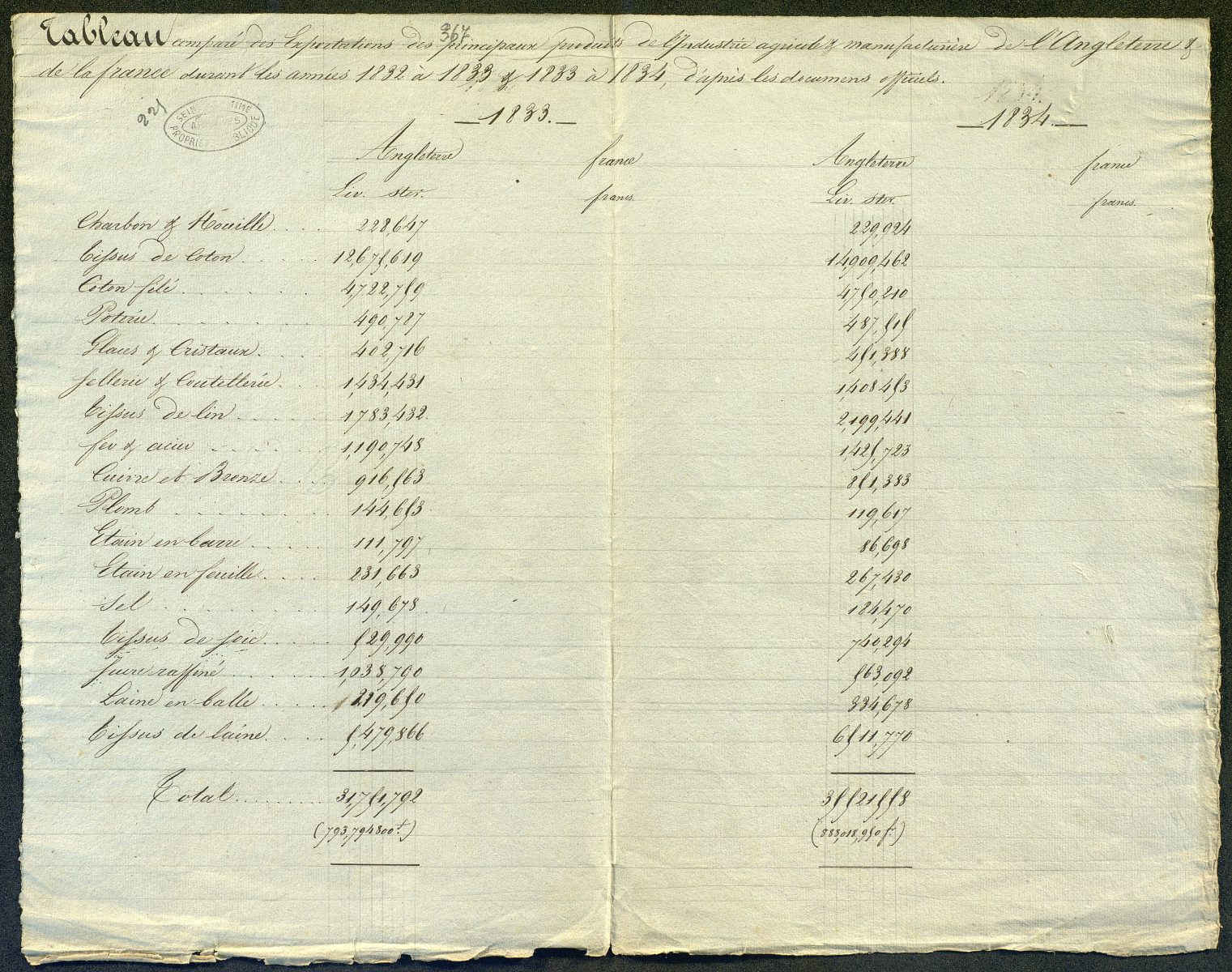Exports From England Historical Background Study on trade between France and England Survey statistics from the office of the prefecture…
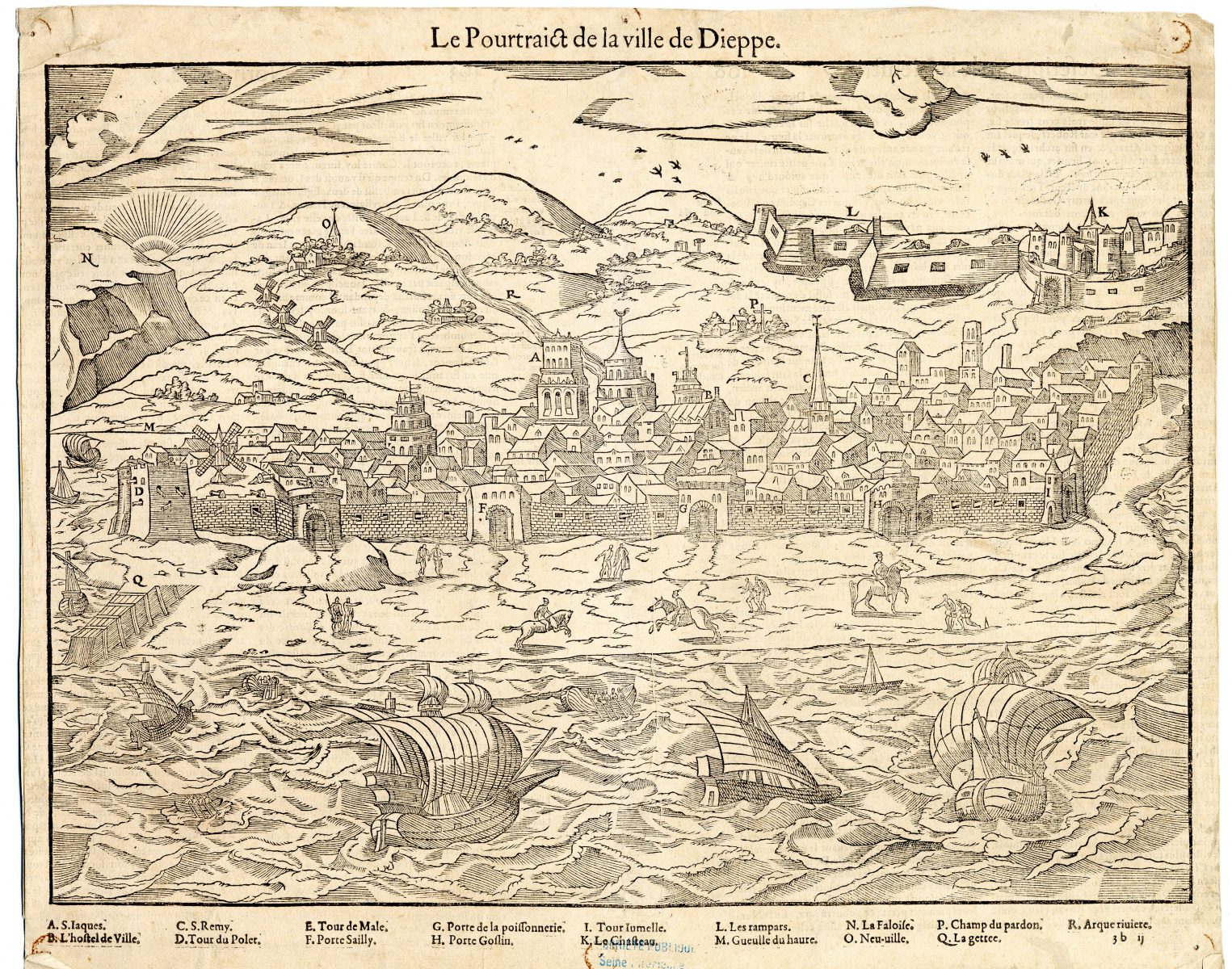
Portrait of Dieppe
“Le Pourtraict de la ville de Dieppe”, by François de Belleforest (1530-1583), 1575. Wood engraving.
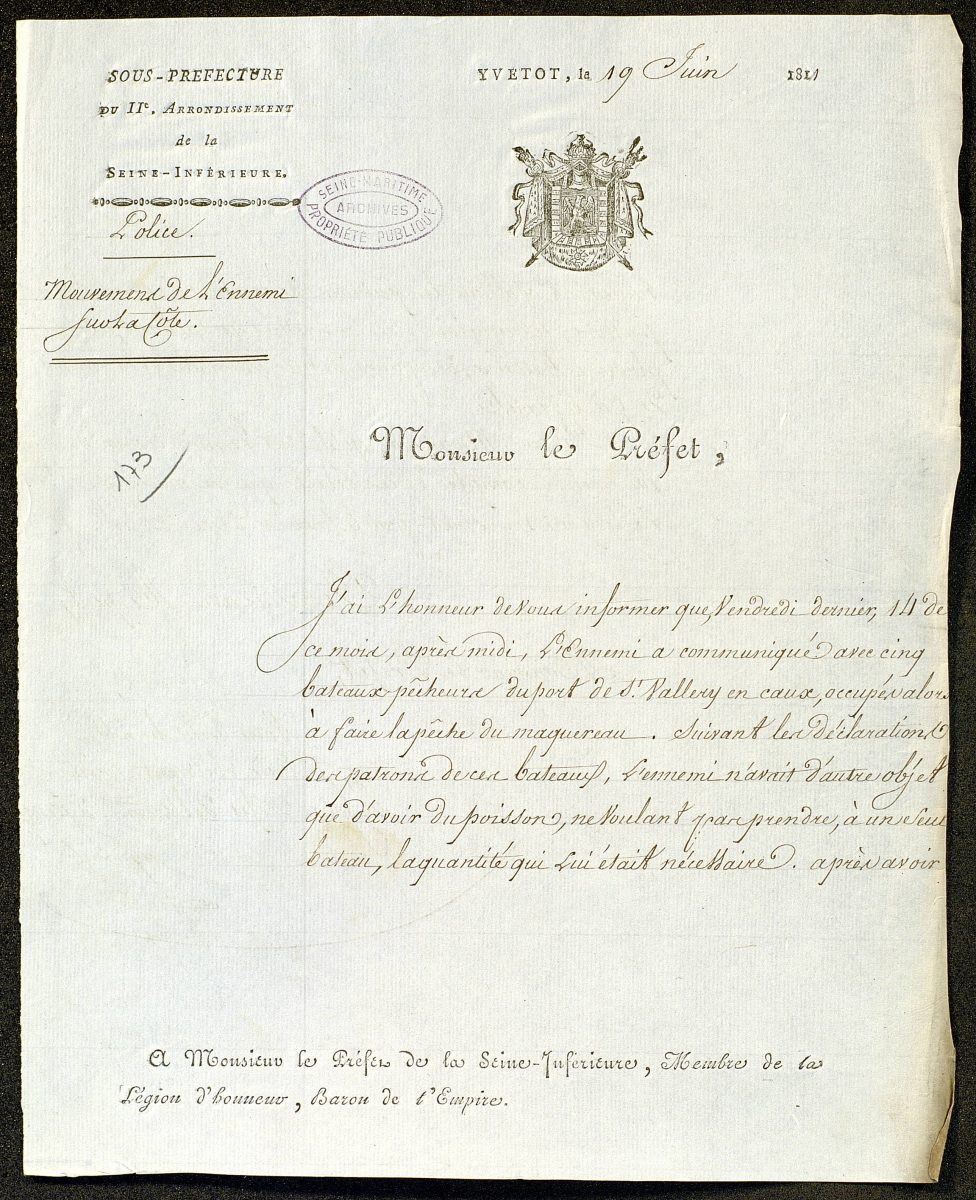
Enemy movement on the Norman coast
Letter from the Deputy Prefect to the Prefect dated June 19, 1811 ; title: ” enemy movement on the coast “
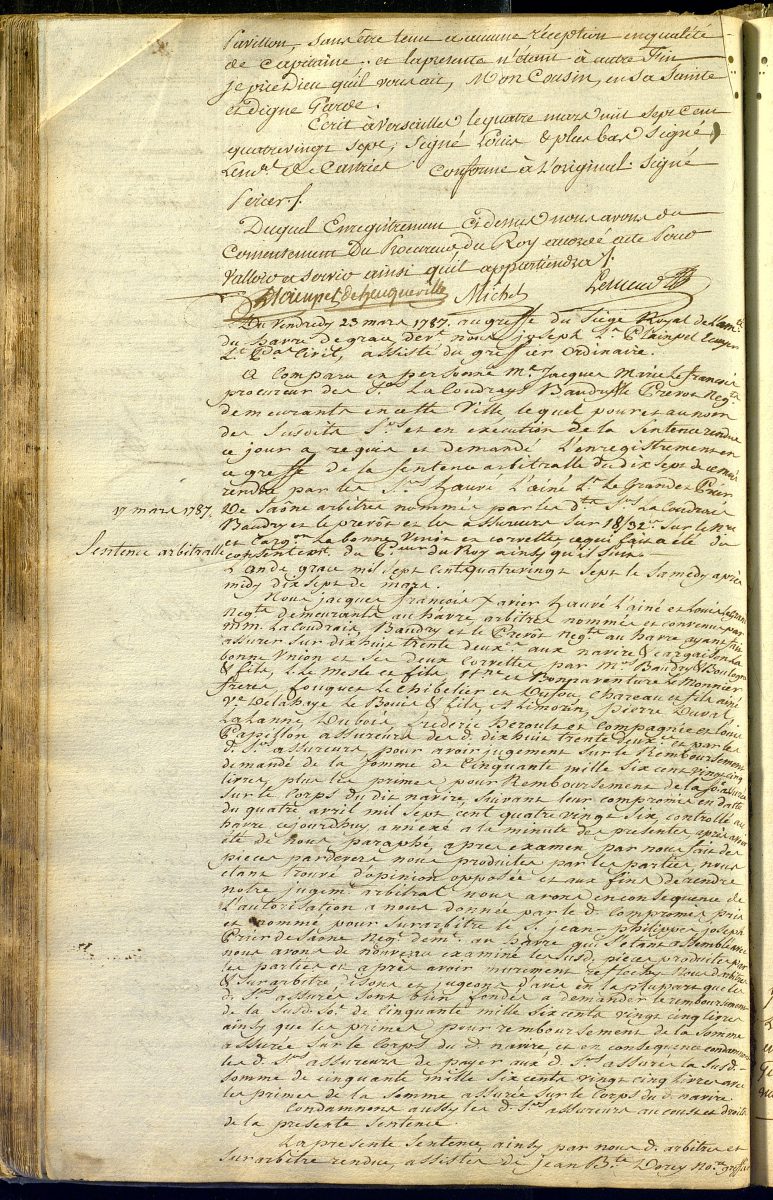
King’s letter to Captain Smith
King’s letter authorizing Captain Smith, English ship commander, to order under the French flag a vessel plying the slave trade, without receiving act of reception, recorded on March 17, 1787.
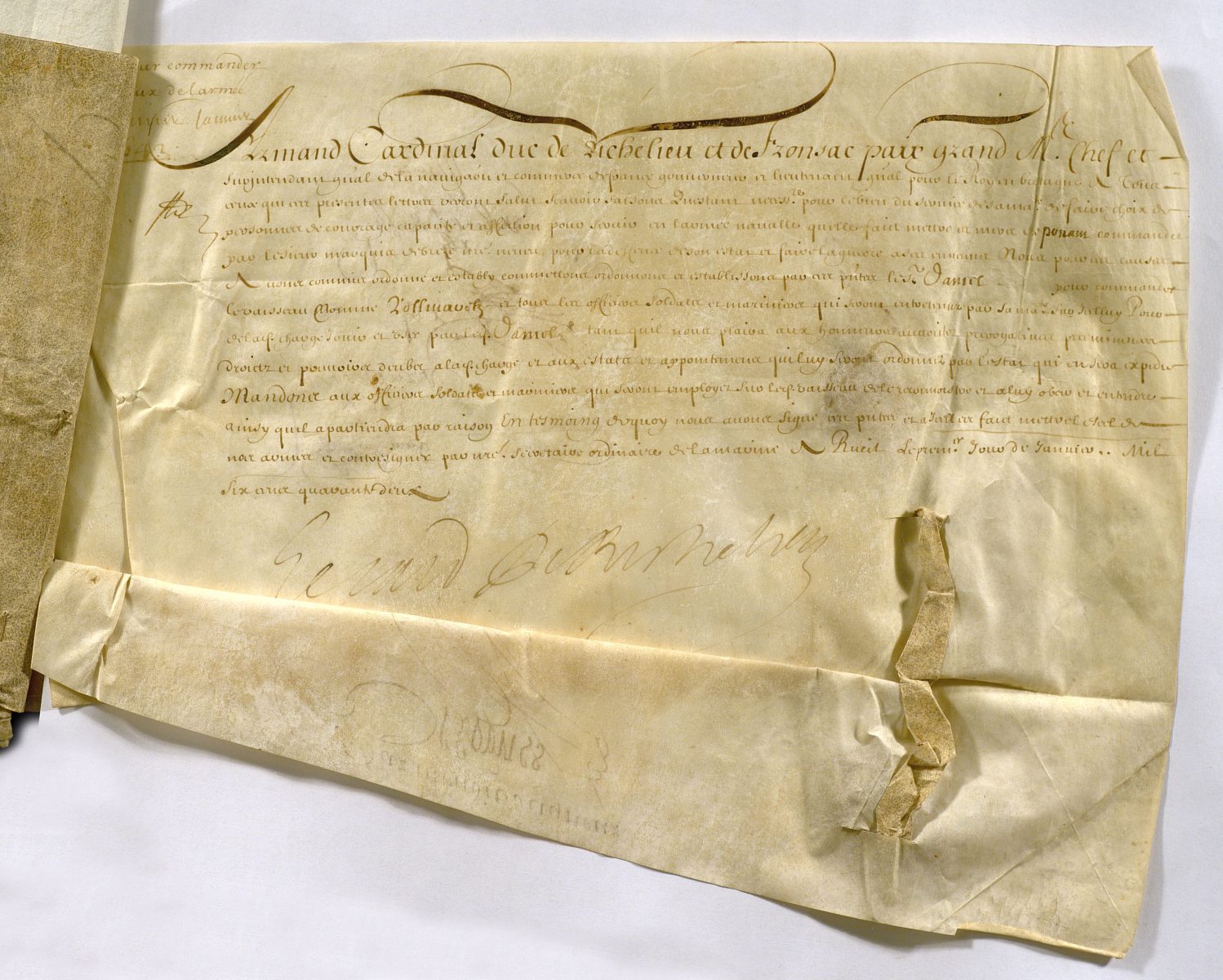
Cardinal Richelieu’s instructions to Captain Daniel
The end of the Hundred Years War placed Normandy away from foreign wars for several centuries. This does not preclude the province to participate in transactions, including shipping. Captain Charles Daniel, a native from Dieppe, who served many commandments in the Royal Navy, is a fine example of a naval officer.
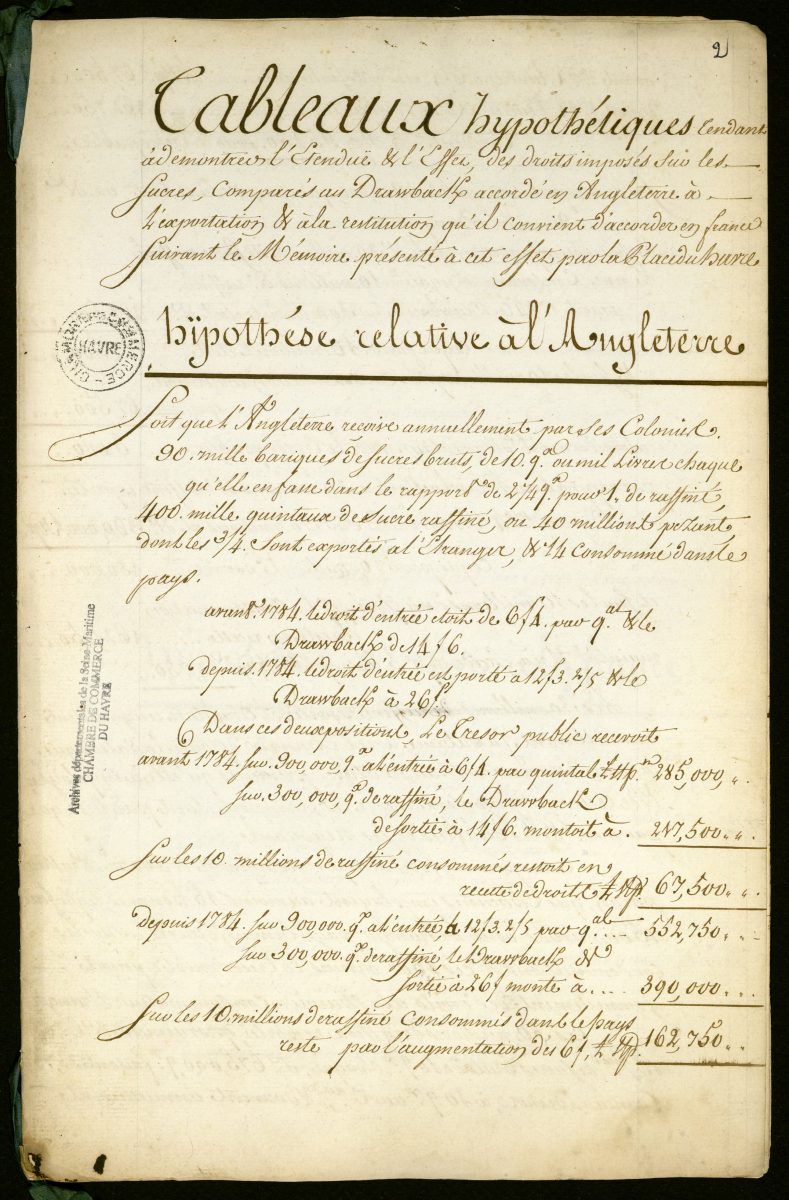
Letter and report about English and French trade after Treaty of Eden-Rayneval, 1786.
Letter
to the members of the Chamber of Commerce of Le Havre and a comparative
report of the English and French trade after the Treaty of Commerce
1786, 1788
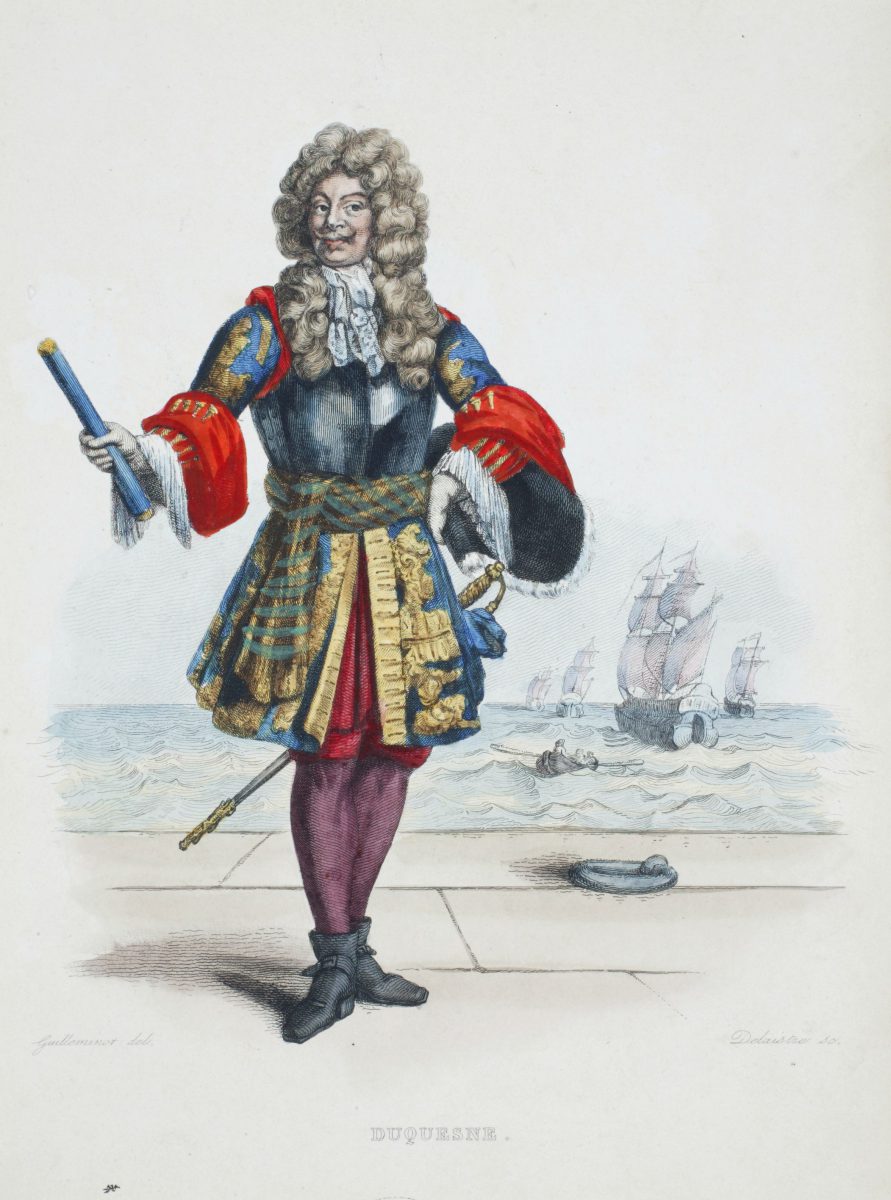
Abraham Duquesne
Lithograph dated 19th century.
Born in 1610 in Dieppe from a Huguenot family, Abraham Duquesne takes his first command in the Navy at 18 years.
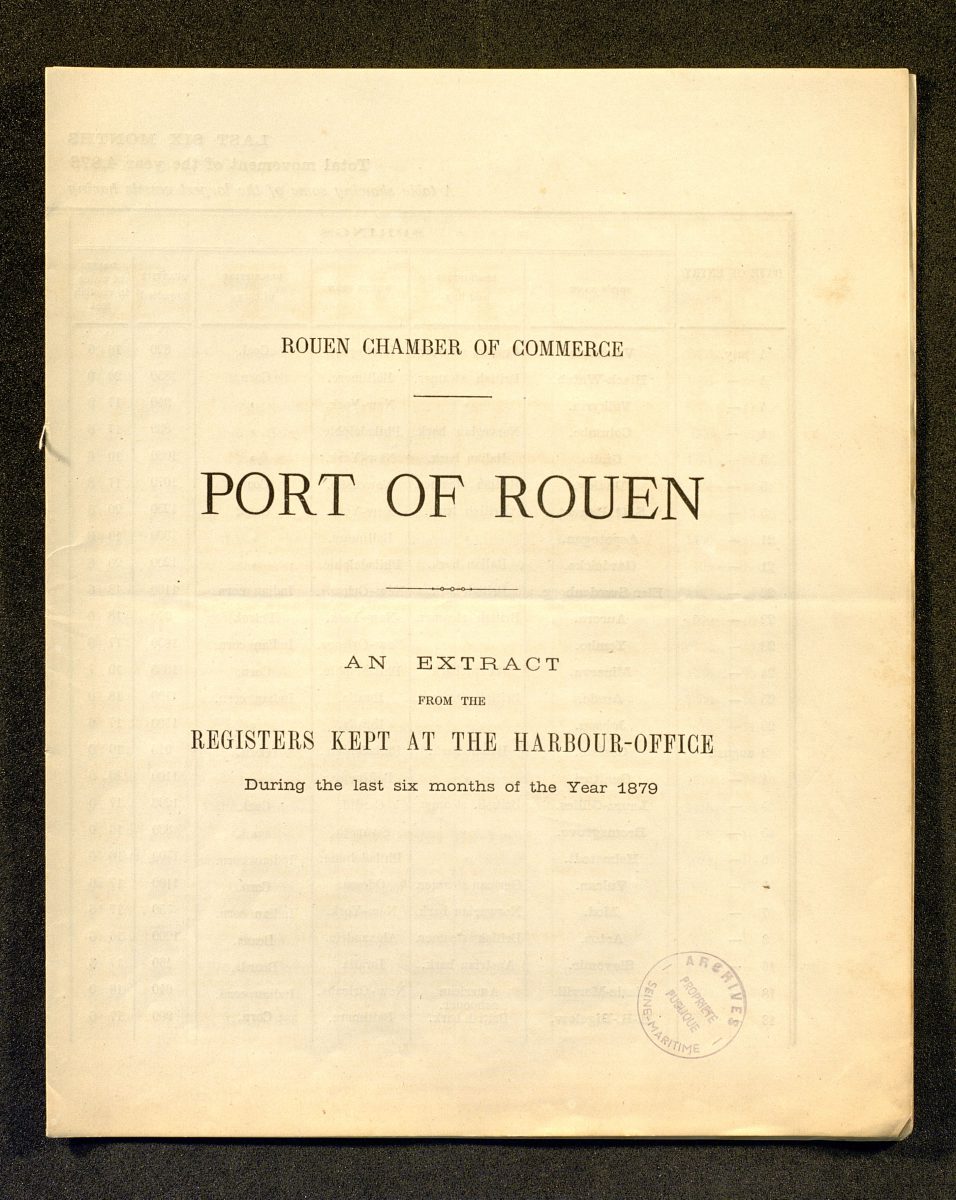
Movements of vessels in the port of Rouen
Report of the Chamber of Commerce, in English.
It was not until the mid-nineteenth century that the practice of free trade between the two sides of the Channel really develops.
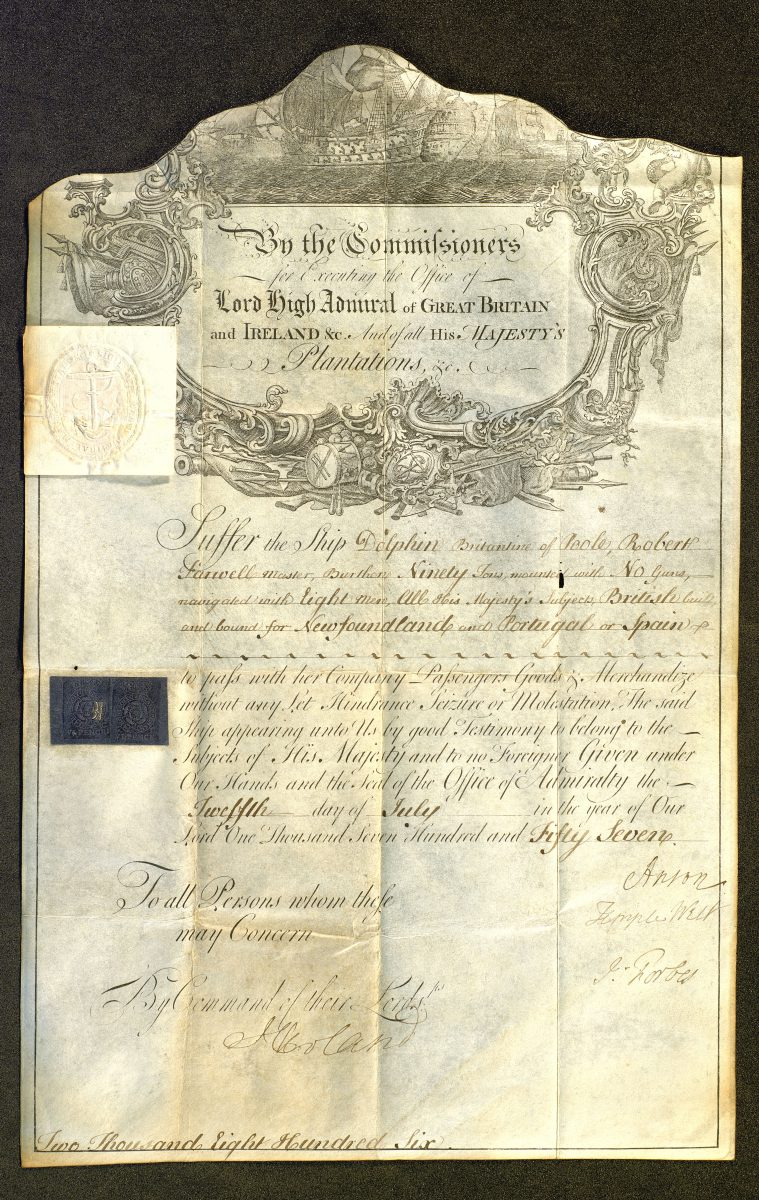
Appointment of an English captain
Dated 1757, this document appoints Robert Farwell as captain of the Dolphin, an unarmed trading ship with a capacity of 90 tons and bound for Newfoundland, Portugal or Spain.
The appointment was made in the name of the Lord High Admiral “of Great Britain and Ireland etc. and of all His Majesty’s plantations”.
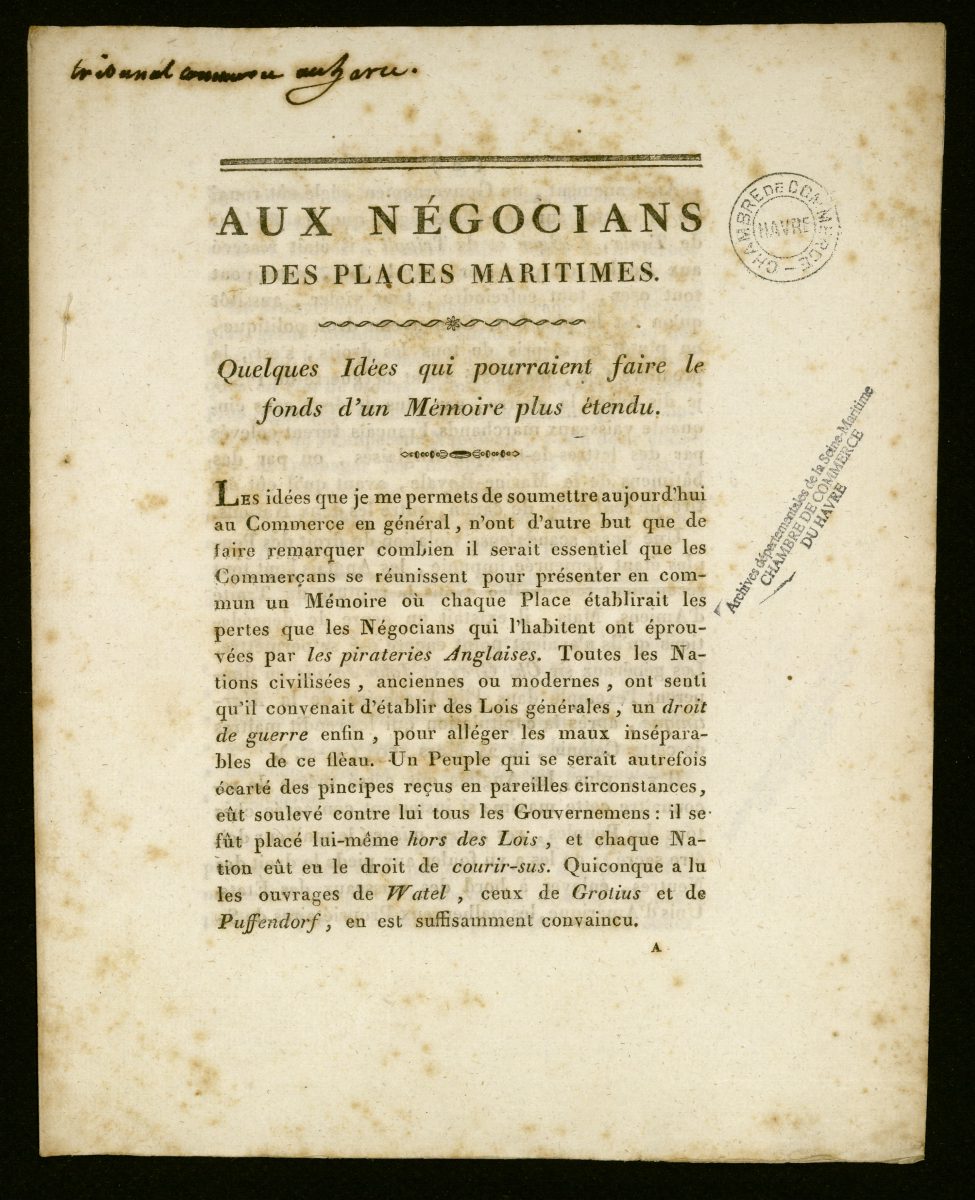
Report addressed to seaports traders mentioning the abuses of English pirates
This report aims at encouraging traders from Le Havre to meet and assess their lost incomes from English piracy in the colonies.
This document highlights one of the origins of the Franco-British conflict in18th and 19th centuries.
Indeed, trade with the colonies is an economic issue.
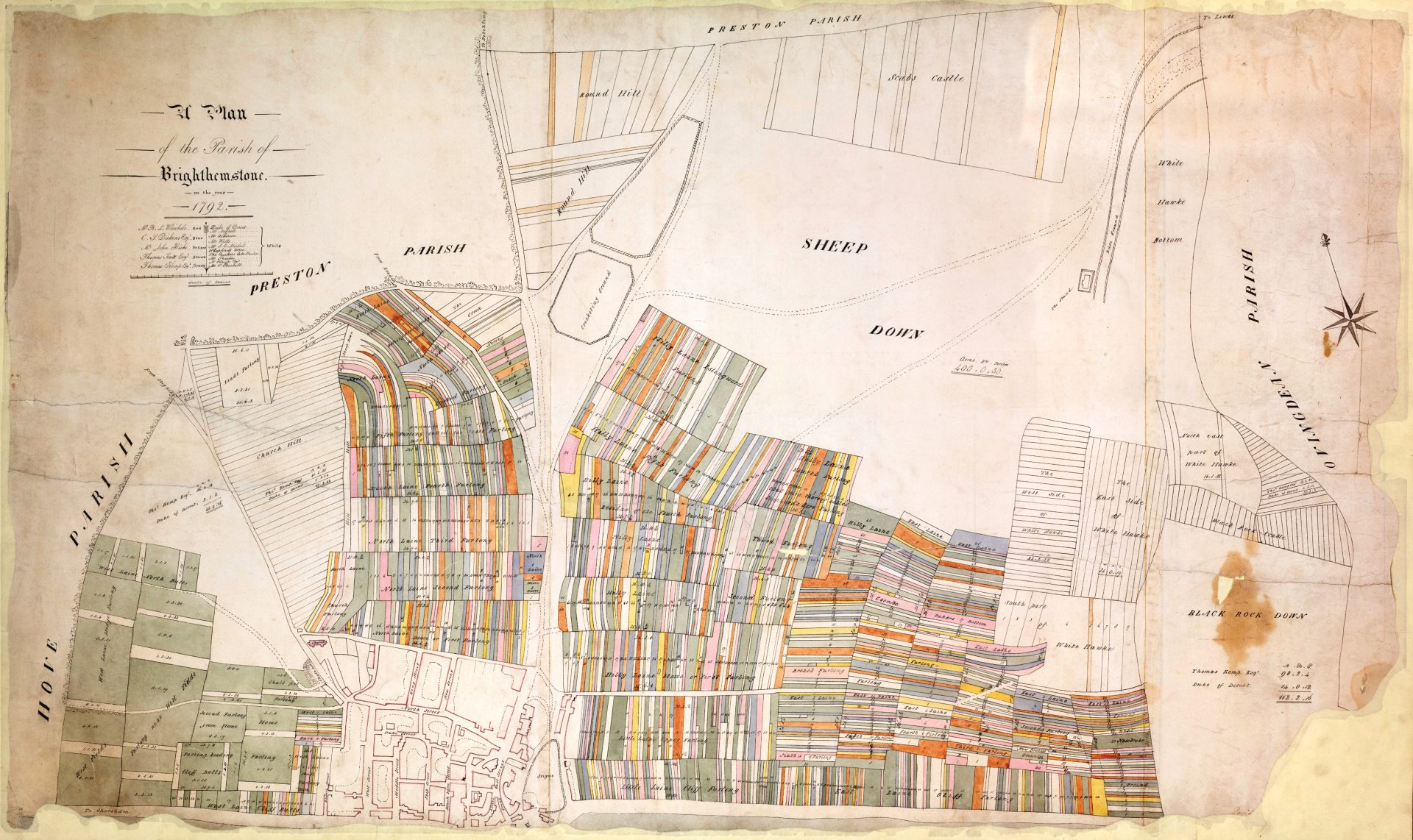
Map of Brighton
View 1 : Plan of the Parish of Brighthemstone, 1792
130 x 82
(ESRO: AMS 4106)
View 2 : Map of the town of Brighton and its environs, 1850
by Ligott Smith for the regent King George IV
144 x 113
(ESRO : QDP 133)
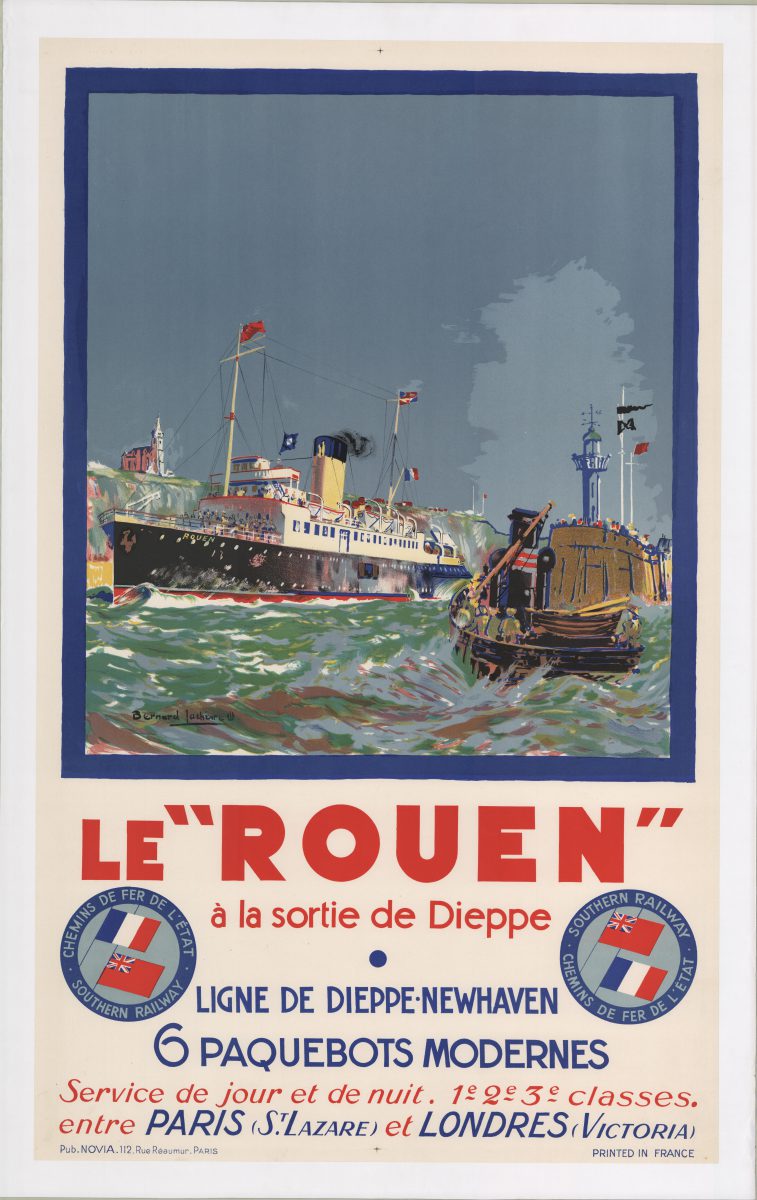
Poster Le Rouen
Advertising poster issued by Chemins de fer de l’Etat et Southern Railway to promote the ferry service between Newhaven and Dieppe on Le Rouen.
Printed around 1920.
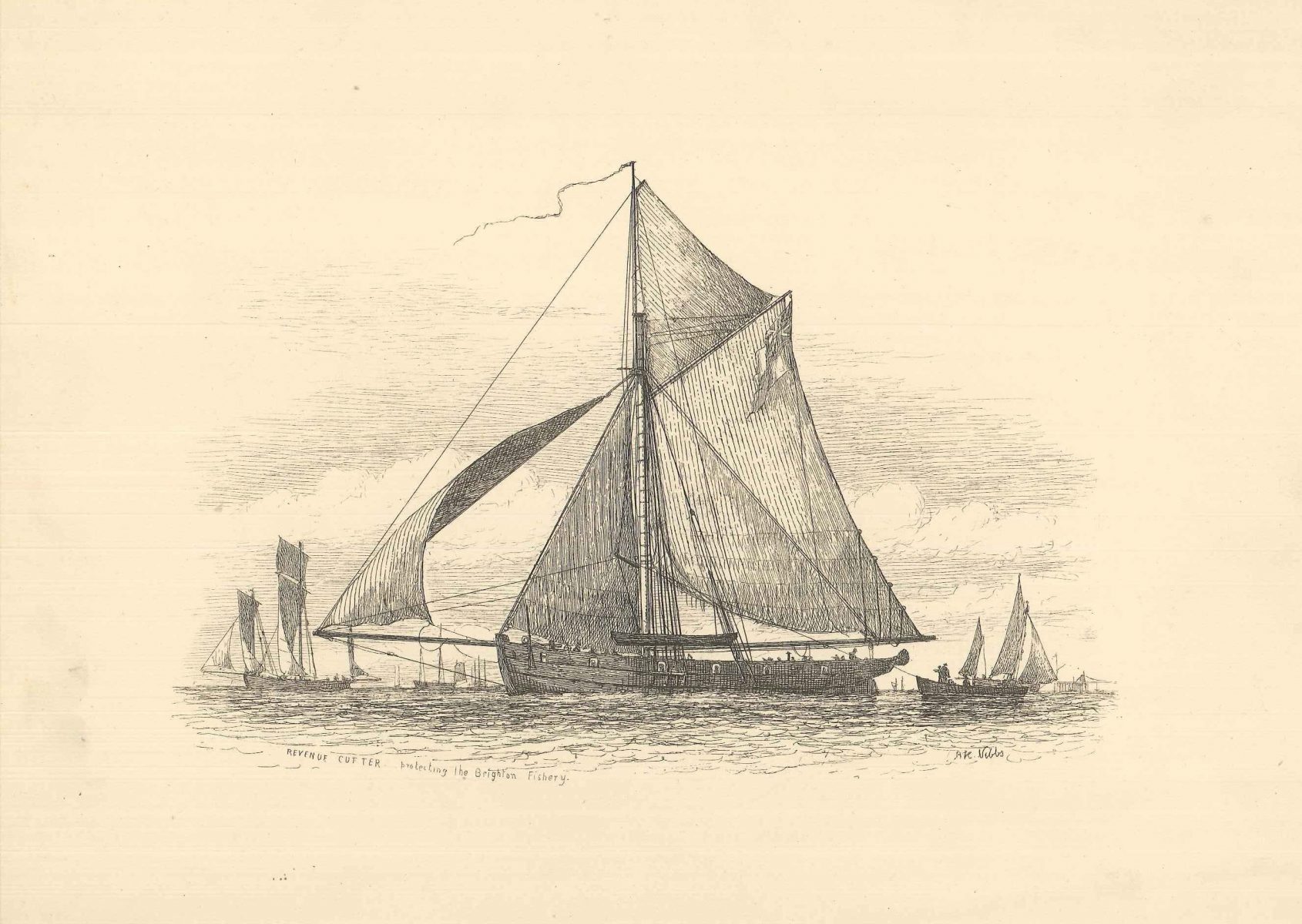
Revenue Cutter
A Revenue cutter is a small lighty armed boat, used to enforce customs regulations and catch smugglers.
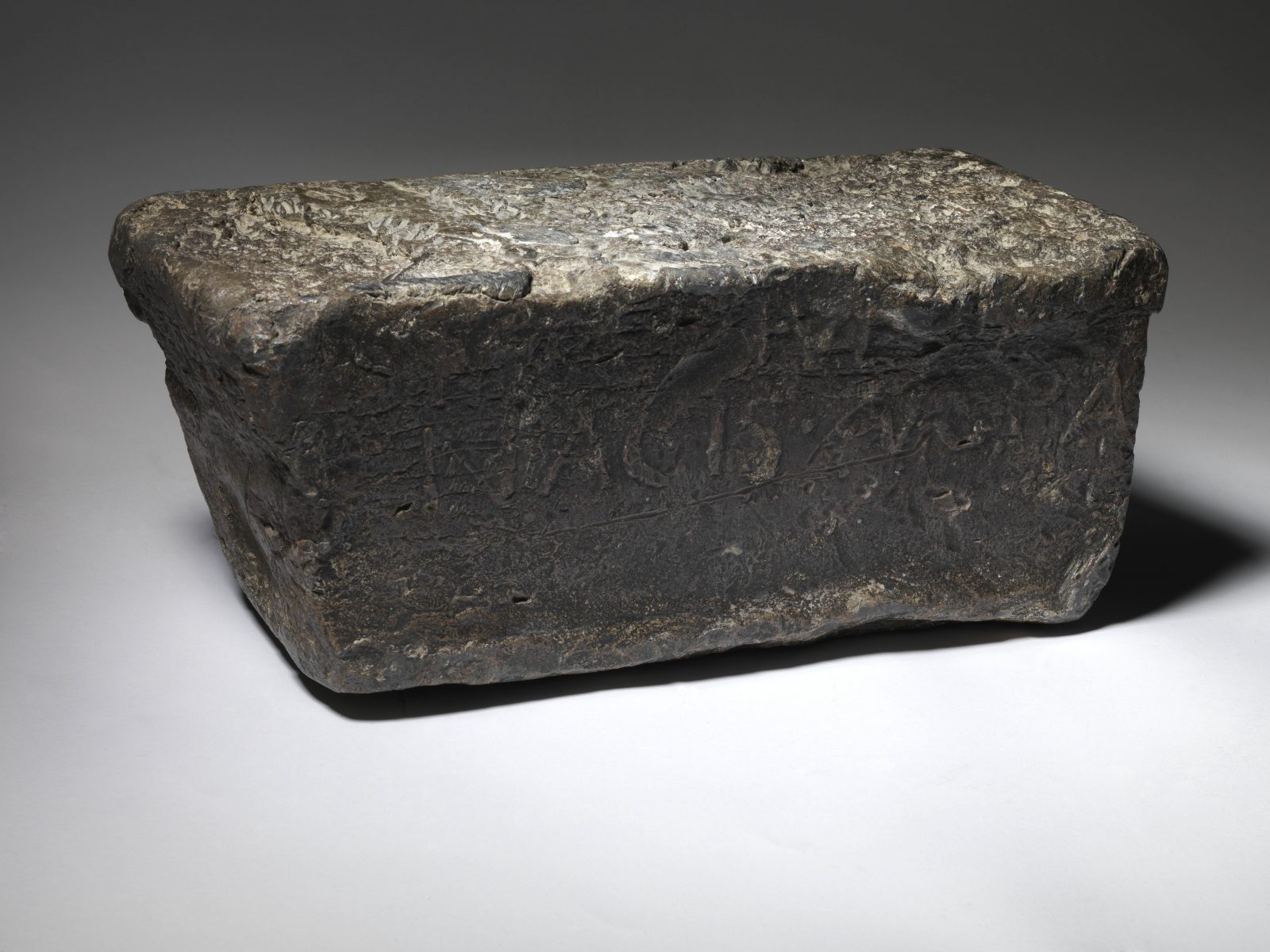
Lead ingot
Ancient lead ingot found in Lillebonne in 1840, at the bottom of the Roman theatre’s outer wall. Weight : 43,5 kg
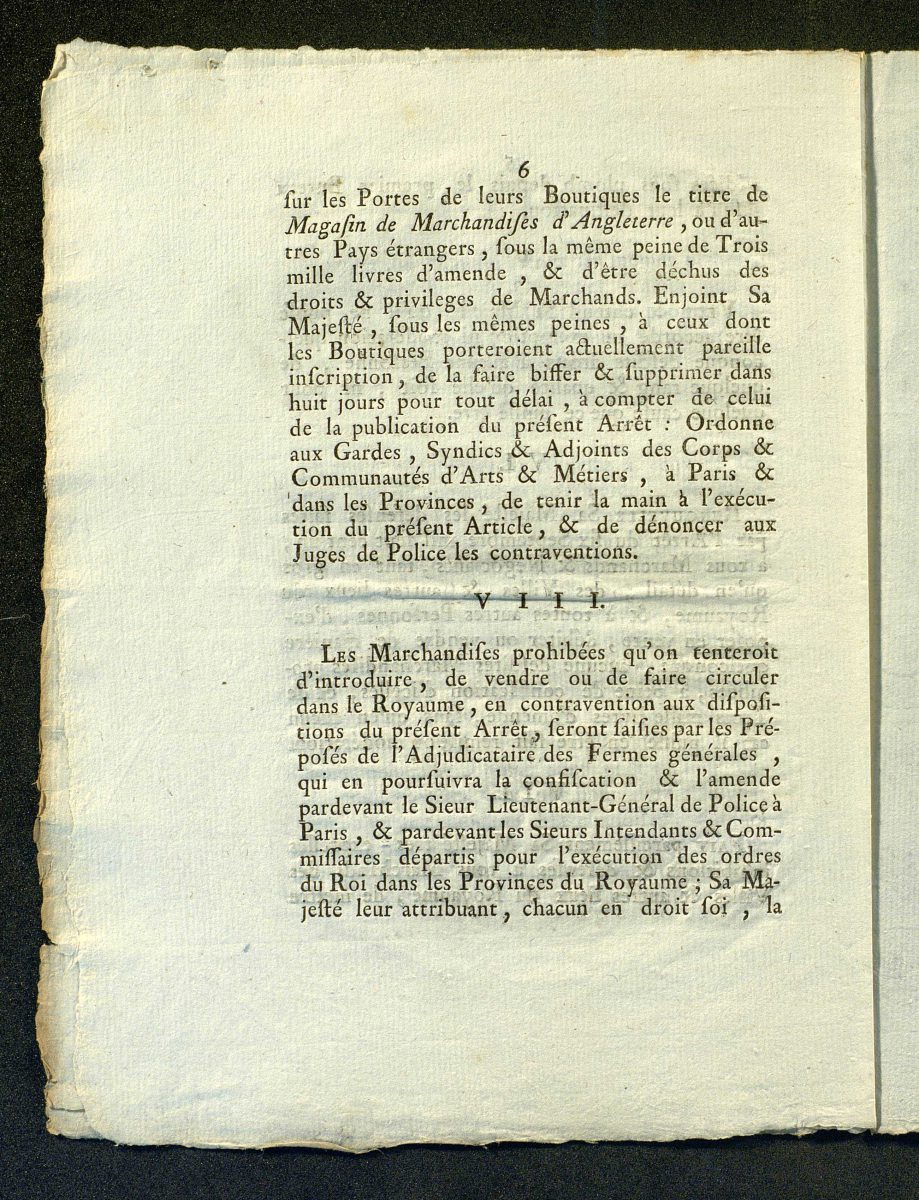
report drawn up by John Holker junior containing suggestions as to how to combat English smuggling
In this report, John Holker junior describes the goods smuggled and lists the French and foreign ports where they are landed, and accuses some Dieppe fishermen of being involved.
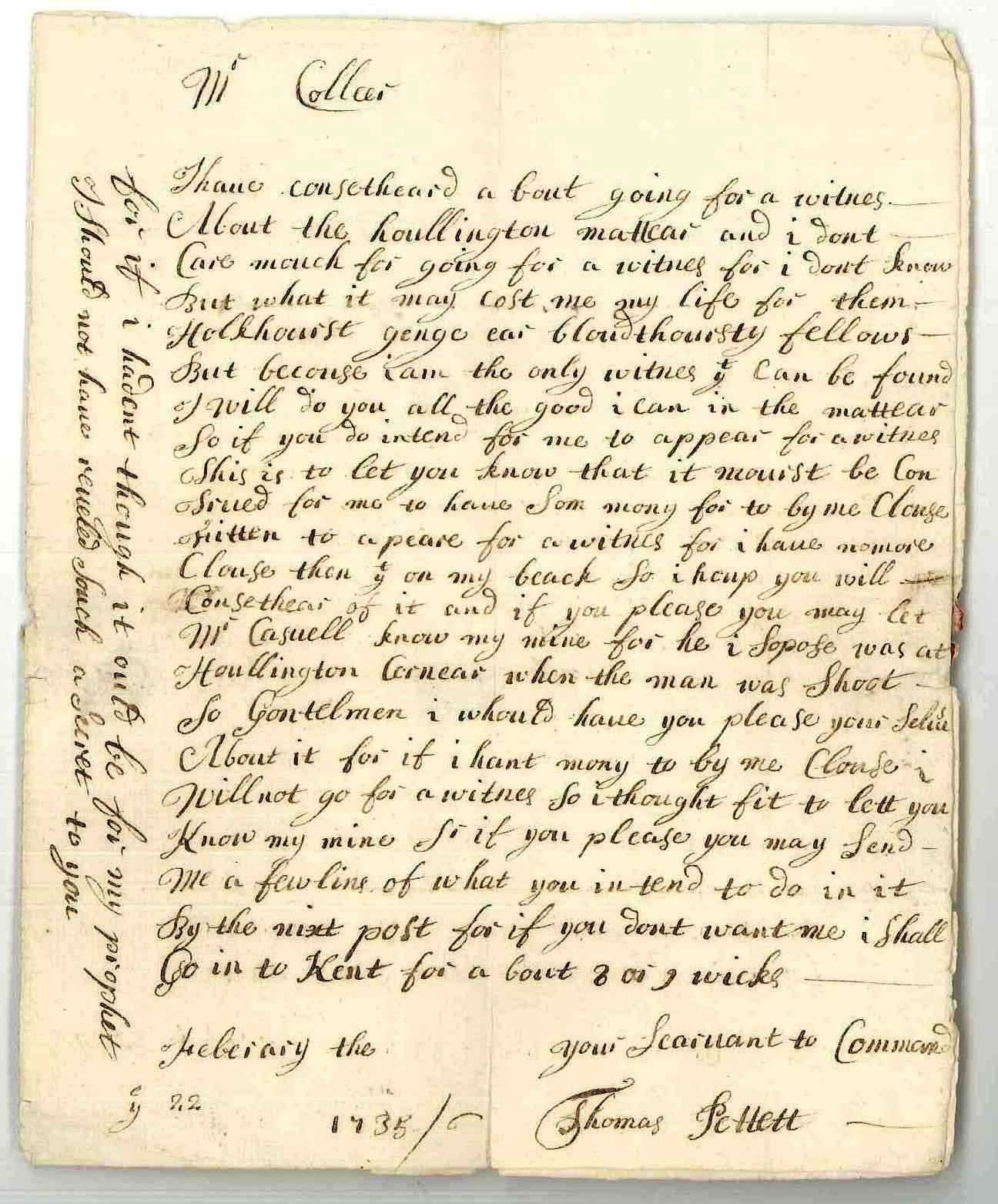
Letter from Thomas Pettet to John Collier
Collier (1685-1760) was Solicitor for the Crown assisting in trials of
smugglers until 1733 when he was appointed Surveyor-General of the
Riding Officers of Kent.
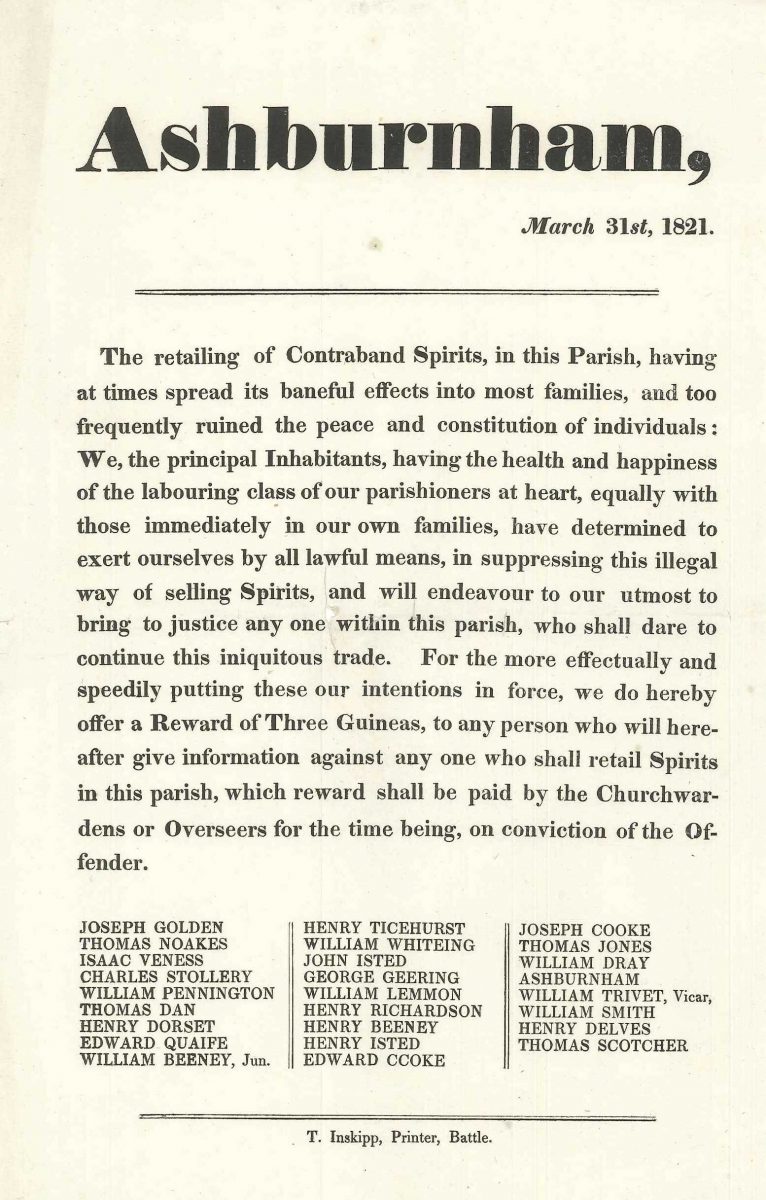
Printed notice about contraband spirits
Printed notice offering reward for information about retailing contraband spirits, which would have included French brandy.
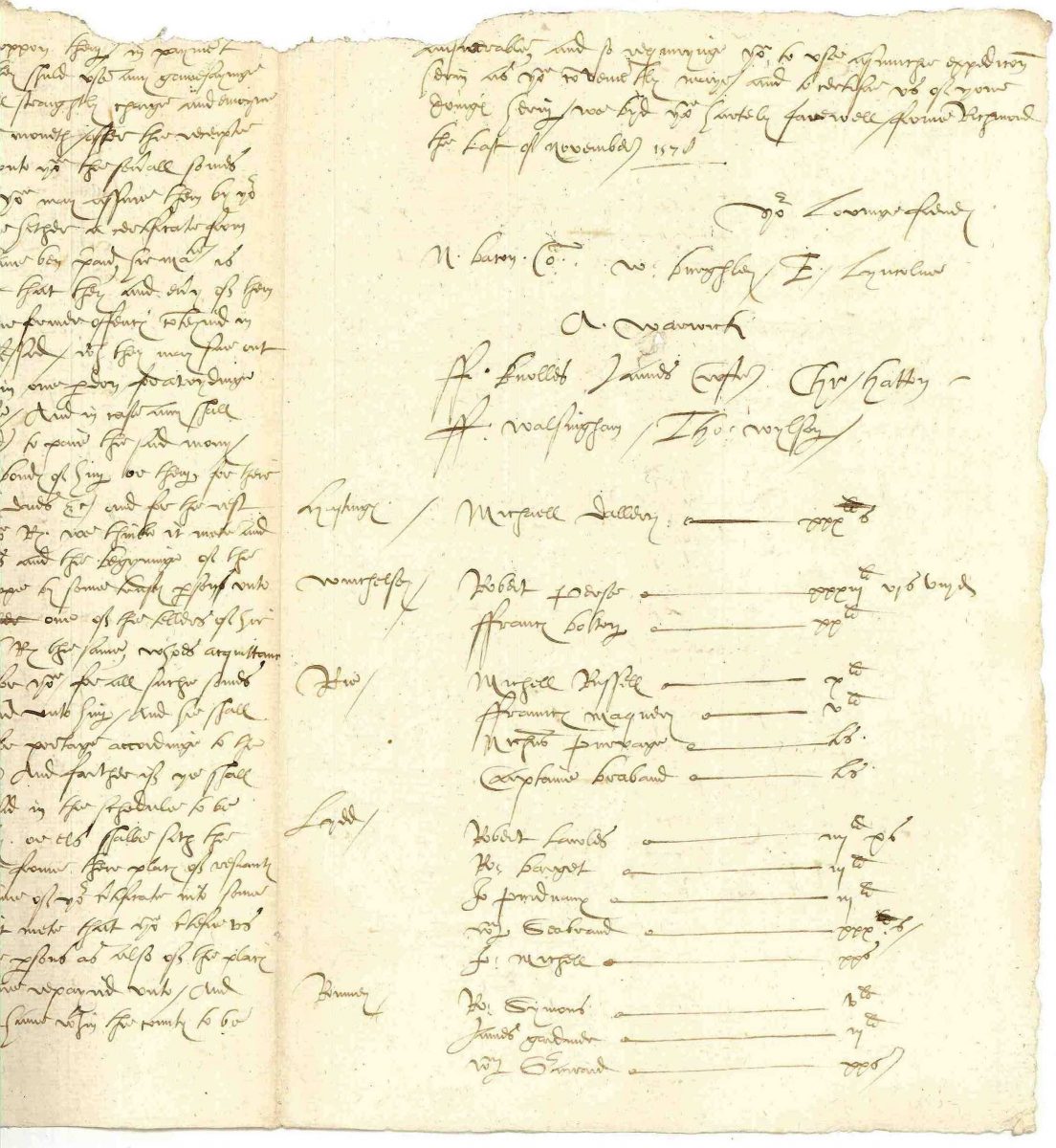
Draft letter from The Mayor and Jurats of Rye to Richard Barry, Lieutenant of Dover Castle, concerning fines for piracy
The letter lists men suspected of piracy at Hastings, Rye, Lydd and Romney, a number of whom are French. They include Frances Maquery from Rye, a French merchant from Dieppe, who also appears elsewhere in the exhibition.
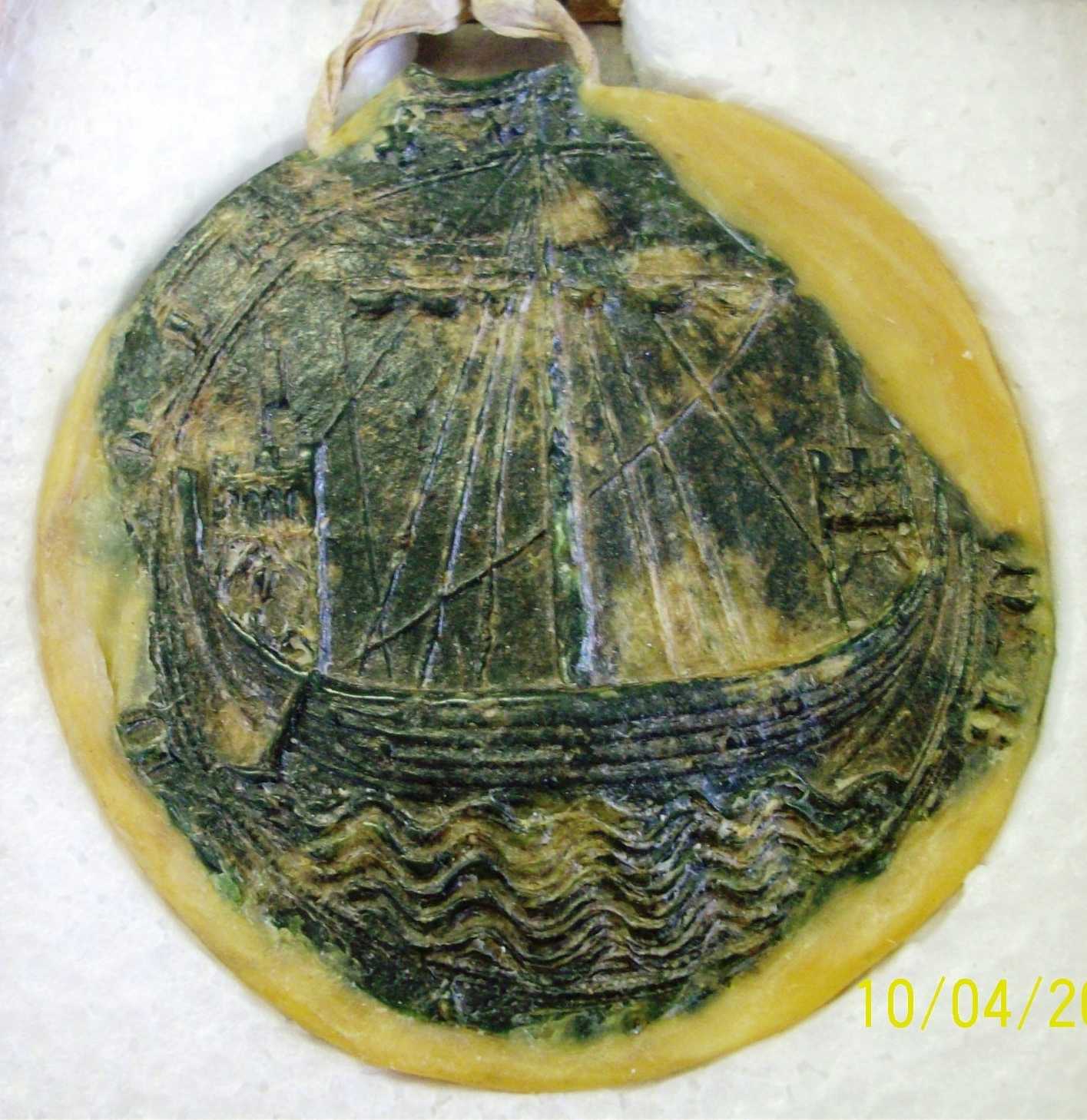
Seal of Rye
A deed conveying property in Merstret in Rye from John and Alice Torel to Peter and Denise Hegsthone. There are two seals attached, both in green wax. The smaller is of John Torel and shows a ship with one mast.
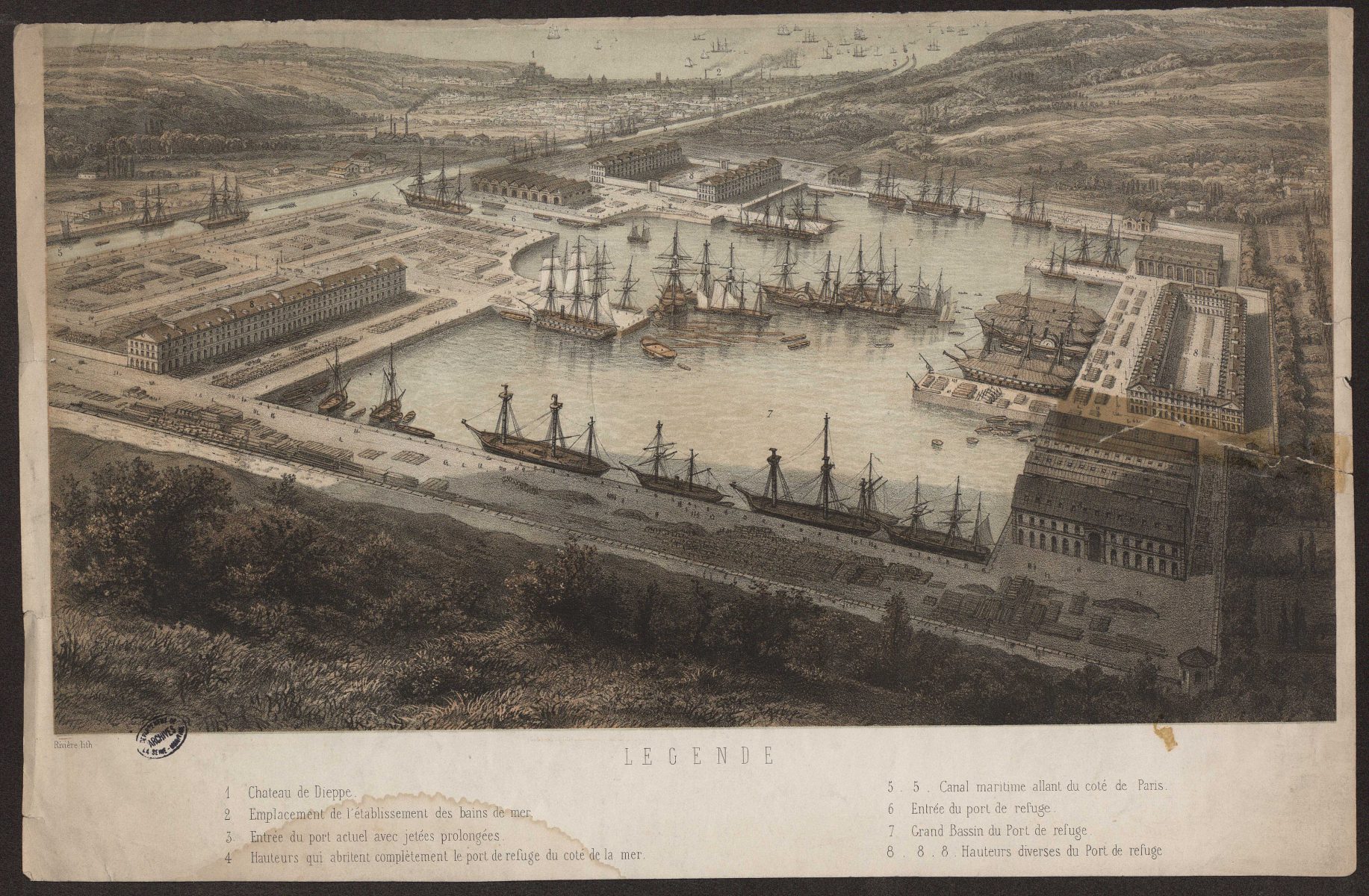
Extension project for the port of Dieppe, with the creation of a port of refuge. Colour lithography by Rivière
This perspective view of Dieppe, designed around 1840, highlights two ambitious infrastructure projects that never emerged: on the foreground, a large basin meant for receiving tall ships, extends to Neuville; to reach it, the ships used a channel “going to Paris”.
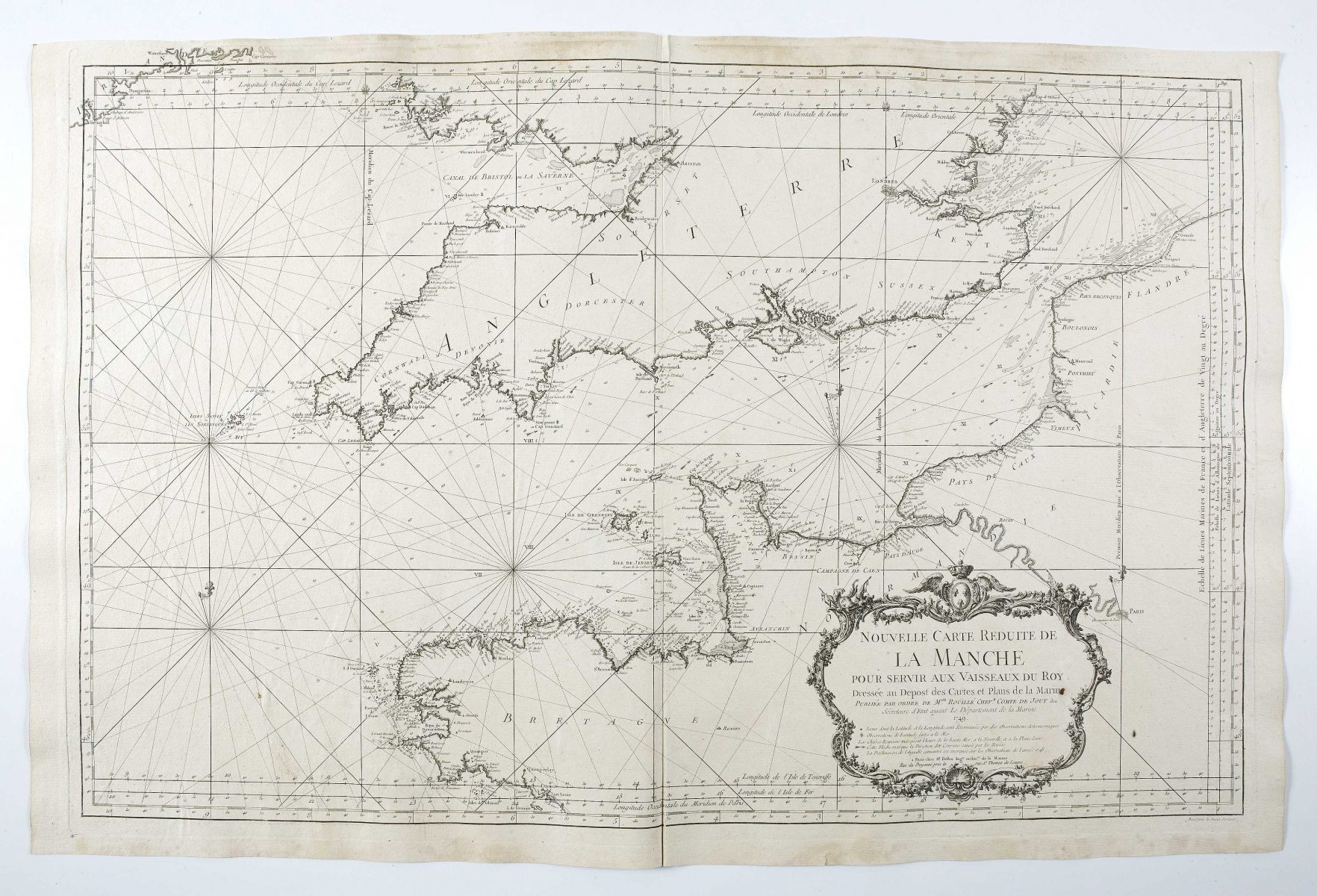
New smaller map of the Channel to assist the King’s ships
The Channel is one of the busiest seas in the world from the point of view of ship numbers, and covers an area of 75,000 km2.
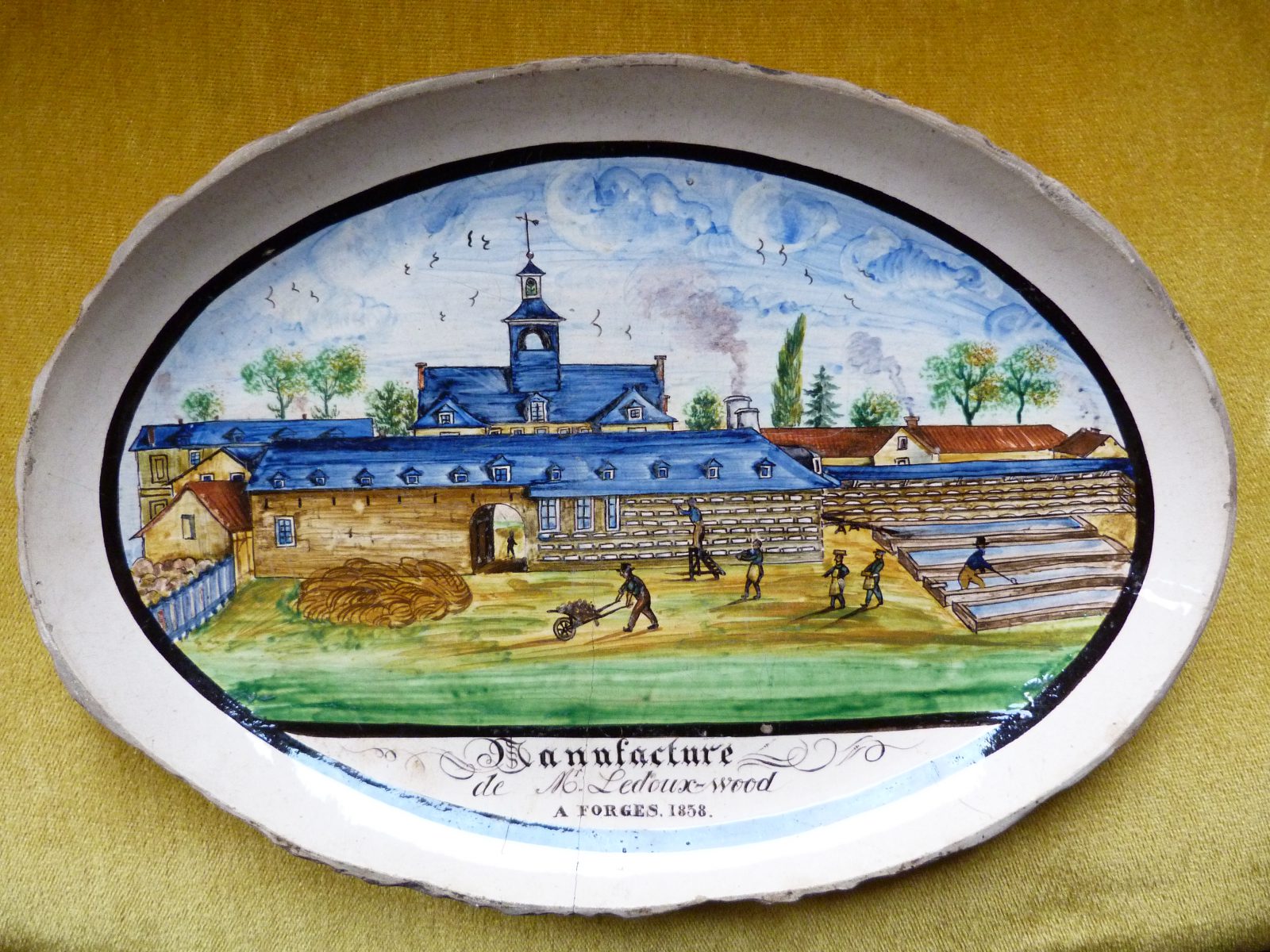
Plates made during the second period of operations of the Ledoux-Wood workshops, undated. Drawing in pen, pencil and wash by C. Ridey
It was in 1797 that the Englishman George Wood set up his business in Forges-les-Eaux.
He concentrated on the production of “fine earthenware”, made according to a technique developed in England in the 18th century, designed to look like porcelain.
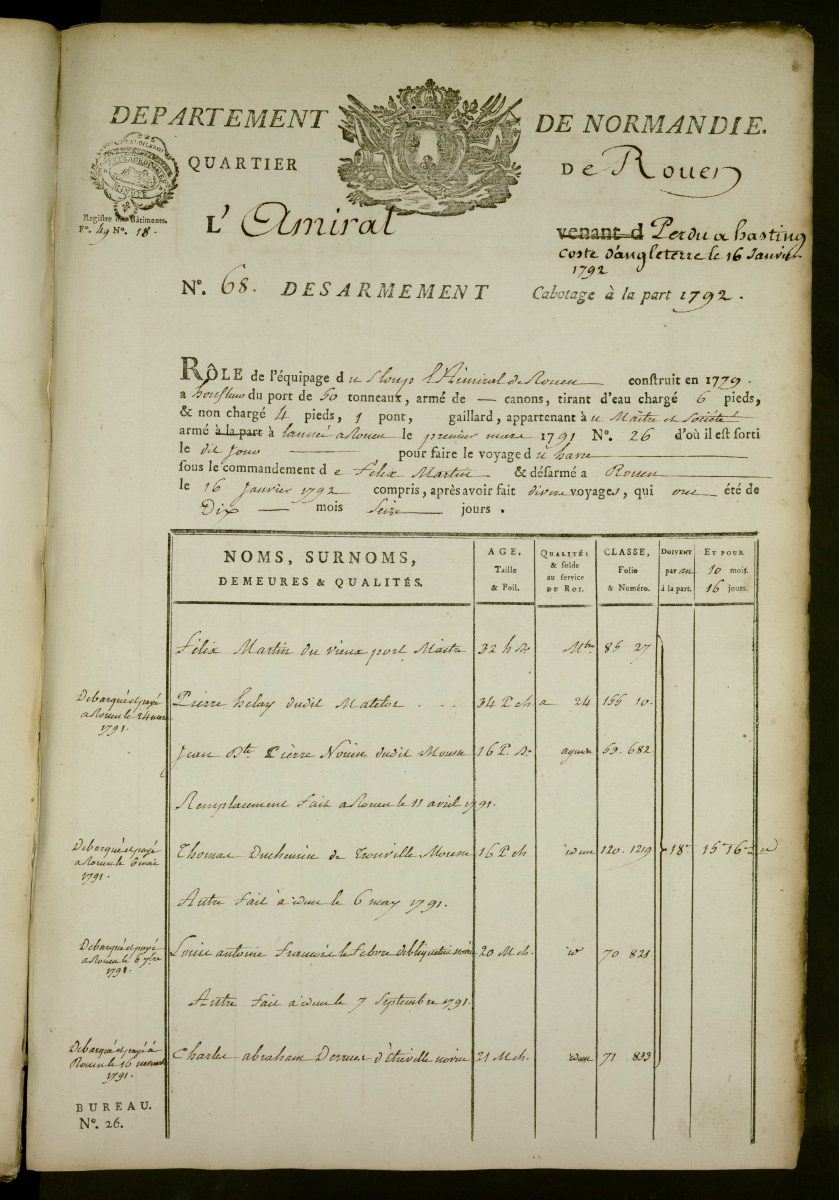
Wreck log of the Amiral, lost off Hastings
Commercial shipping registers show the extent of sea trade on ships leaving Upper Normandy.Some ships were shipwrecked before they reached their destination, as was the case of the Amiral which was lost off the English coast near Hastings on 16 January 1792.
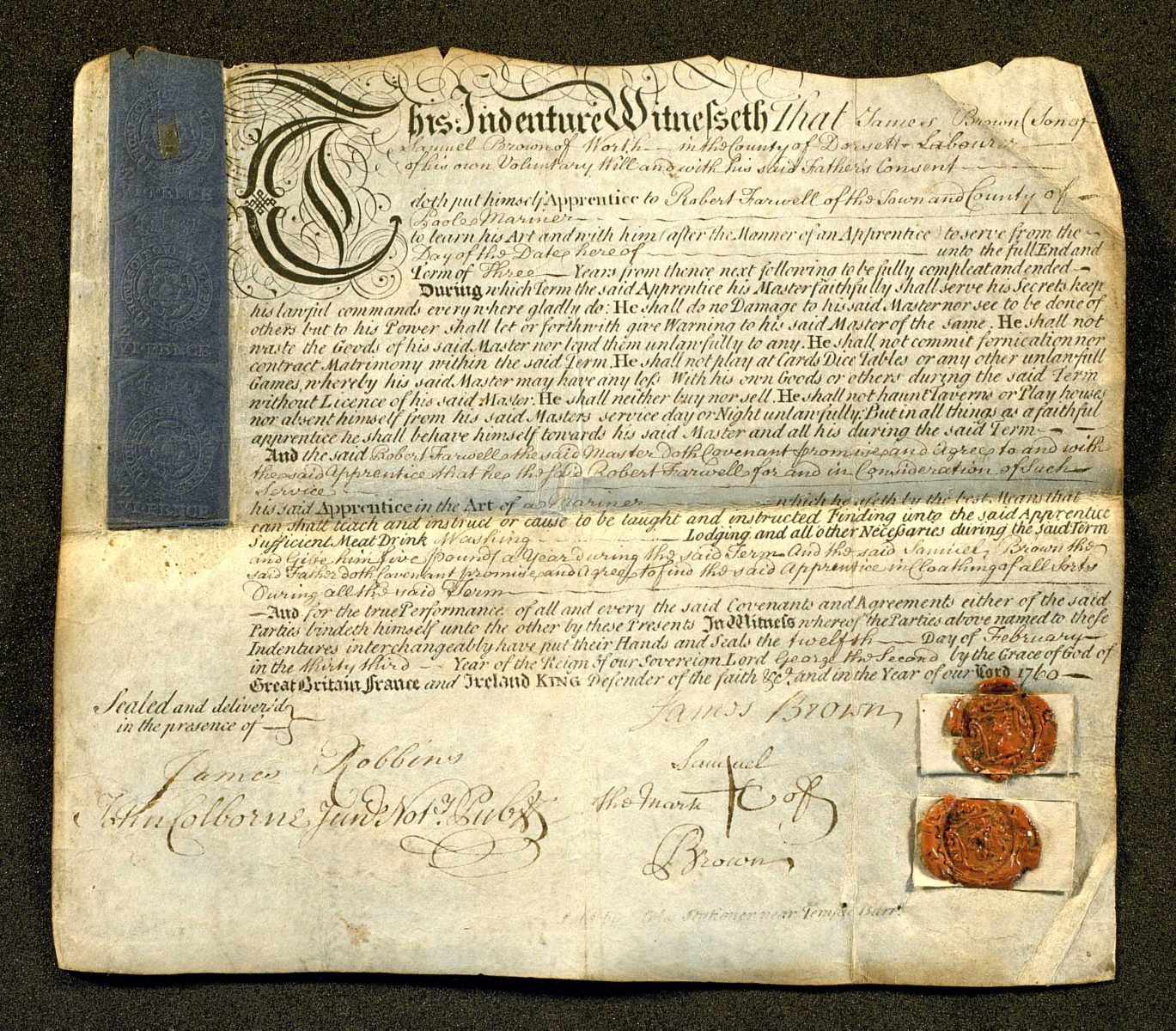
Apprenticeship contract
This document is a sailor’s apprenticeship contract (1760). It is in the format of a mediaeval chirograph: these documents were drawn up in duplicate, one over the other, and cut through along a zig-zag line or indent so that the two parts could be matched together (this is why these contracts are also called indentures).
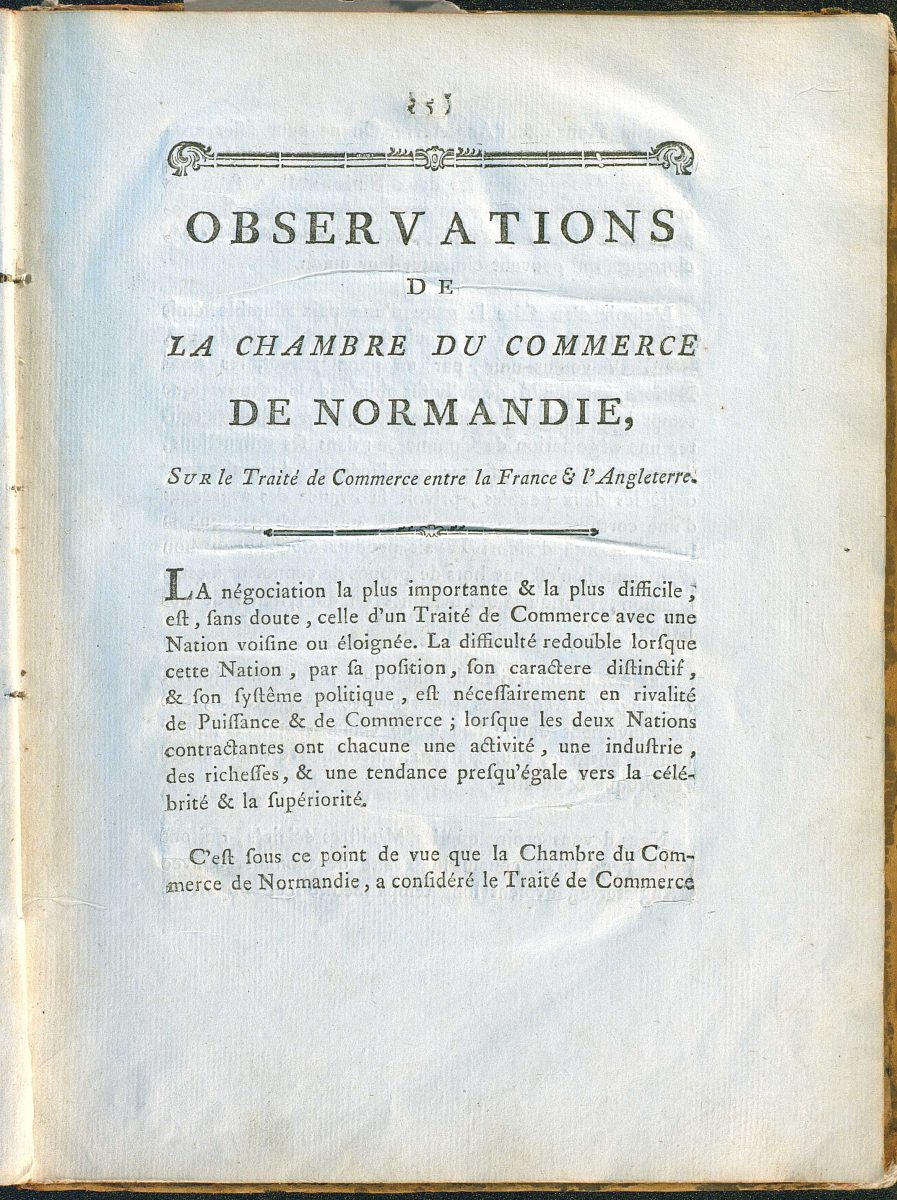
Observations of the Normandy Chamber of Commerce on the trade treaty between France and England
In this memorandum the Chamber of Commerce records its views on the navigation and trade treaty of 1786, having sent two representatives to England. It notes that, contrary to the situation in France, English corporations of merchants and manufacturers had been consulted and had managed to have some clauses that might be detrimental to their business deleted.

